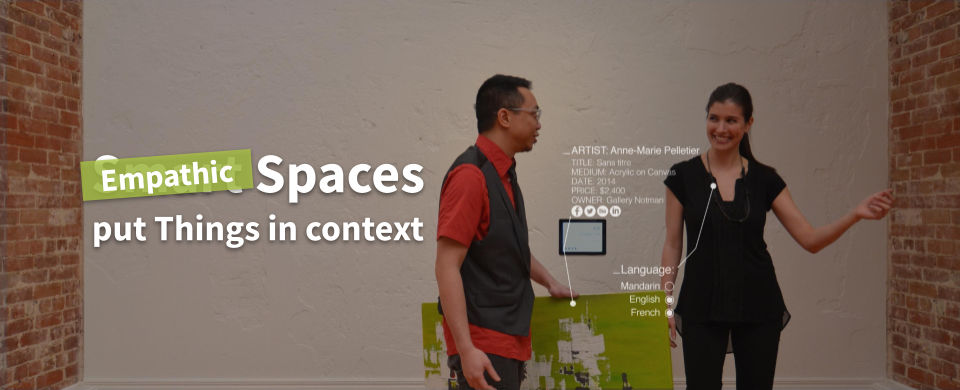What do you call physical spaces that can sense their own occupants and environment? In 2014, we decided to adopt the term Smart Spaces. We shared our vision of this concept in our video entitled Smart Spaces put Things in Context and proudly registered the domain name smartspac.es.
Why Things? Because of our innovation of combining real-time location (RTLS) with the Internet of Things (IoT) to derive context.
Why Smart? Because the concept of a Smart Phone was widely understood as something that empowers its user, and hence a Smart Space could be imagined as something that empowers all of its users/occupants.
The trouble with this argument, especially of late, is that it has become blatantly obvious that the personal smart devices we carry, wear and interact with empower an entire data industry just as much, if not more, than we the users ourselves (see our post Anticipating the Social Dilemma). Which raises the question of whether a Smart Space best describes one which truly serves its occupants, or rather one which serves as the logical extension of an ever-expanding data industry.
Enter the Empathic Space. Or the Empathetic Space, if you prefer.
Why Empathic? Because of its purpose: empathy for its users/occupants.
Empathy is the capacity to understand or feel what another person is experiencing from within their frame of reference, that is, the capacity to place oneself in another’s position.
Source: Wikipedia
The term Empathic Space emphasises the notion of providing service to the occupants of the space by taking into account what they project about themselves. We learned from our very first deployment that people will opt-in and share something about themselves in exchange for something of value to them in return. An Empathic Space should therefore invite its occupants to project whatever they wish (for instance by advertising themselves) and return to them, from the sum of the collective contextual information, something of value. That could be in the form of convenience, comfort, experience and/or expediency. It all depends on the context, which the space itself is able to represent in a standard, machine-readable way (i.e. Hyperlocal Context), so that any computer program may take action on the occupants’ behalf.
In summary, the term Smart has, for better or for worse, taken on the connotation of being at the service of the operator, while the term Empathic retains, at least for now, the notion of being at the service of the user. More succinctly, Smart has succumbed to a techno-centric reality while Empathic embraces a human-centric future.
Empathic Spaces shall succeed Smart Spaces. And if we’re smart about our own future, it shall be more than just in name.
